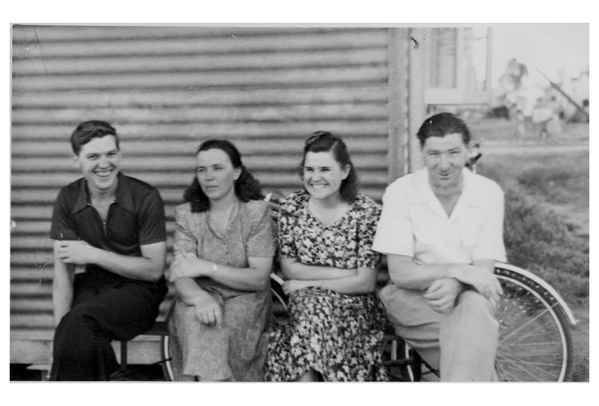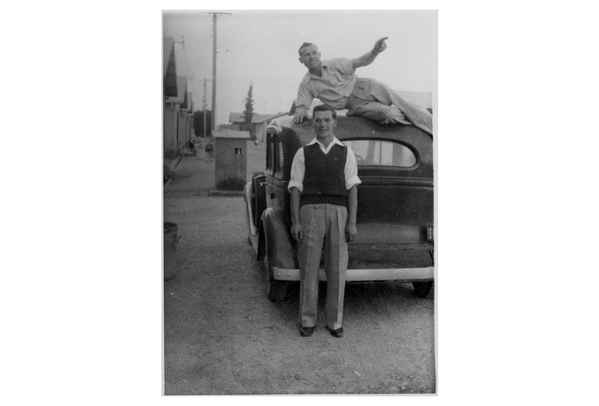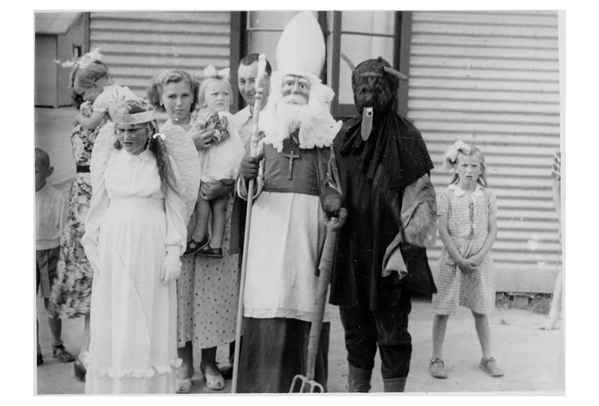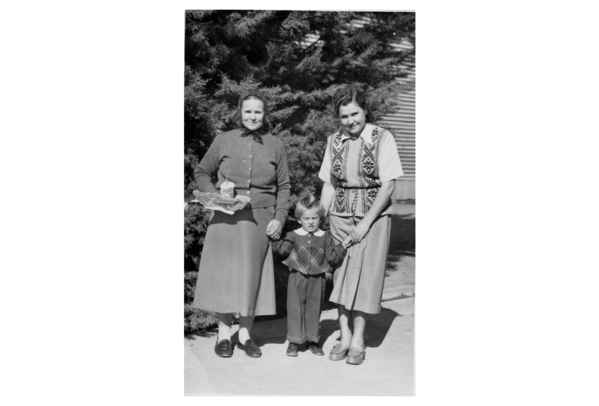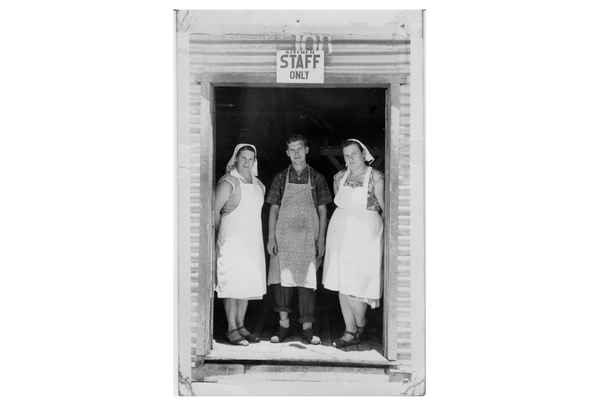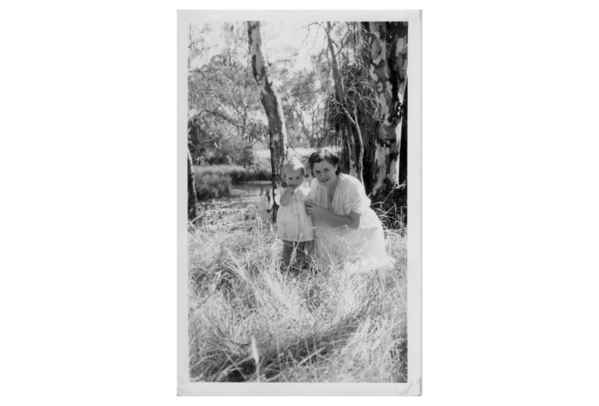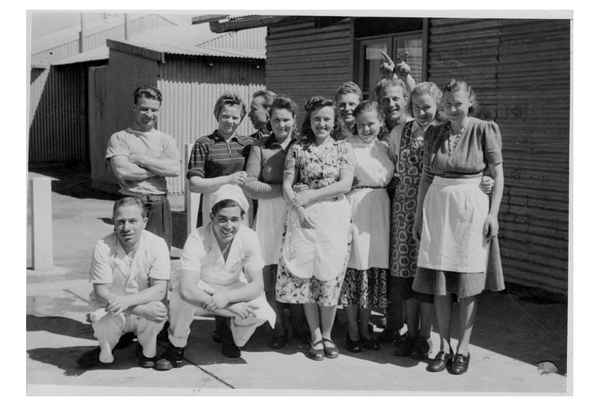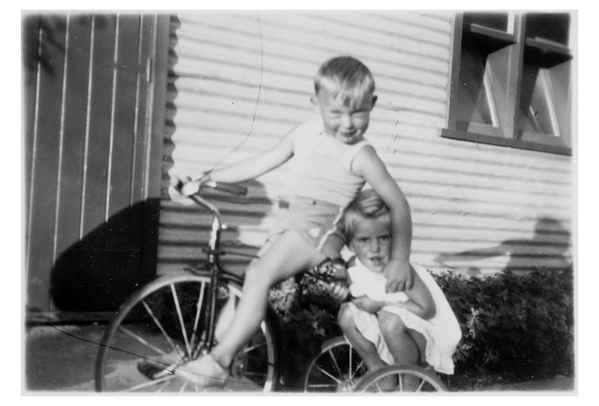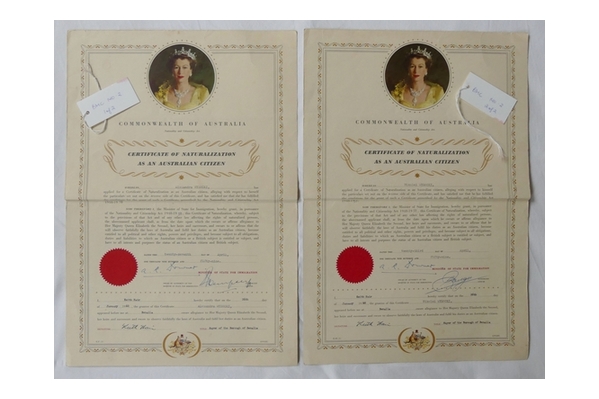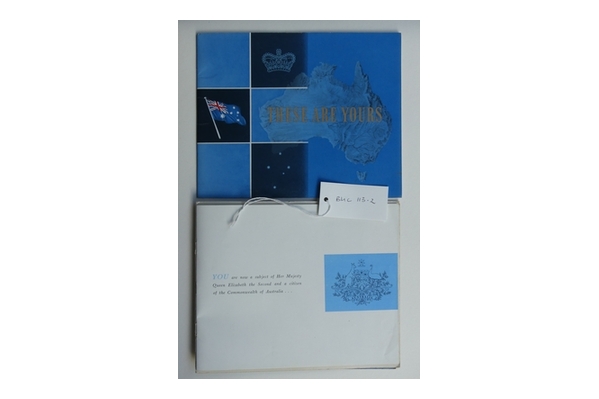WYSOCKI Mikola and Aleksandra
Ukraine 1949-1955
Wysocki Story
(e-mailed to Sabine SMTH by Ludmila Walsh nee Pandik on 10th April 2020)
Our grandfather Mykola (Nikolai) Wysocki was born in 1889 to Yakov (Jacob) and Maria Kolecnik. The Wysocki siblings totalled five brothers and three sisters. The family were rural landowners in Zynkowszcyna, Ukraine. One story told was that when a family member married everyone came together to build a small house on the property for the newlyweds.
His history is scant but one part that's known is that he spent time as a prisoner of war in Austria and at the conclusion of World War 1 he returned home mainly on foot, also carrying with him the learning of a second language which would become an advantage as part of his future.
Our grandmother Aleksandra was born in 1900 the youngest of fourteen children to Nikofor and Agafia Worowki/Vorovki, who also resided in Zynkowszcyna, Ukraine. Presumably, her family also were rural landowners.
During the Russian revolution of 1918 when Ukraine became part of the Soviet Socialist Republic all lands were confiscated and the Ukrainian people were forced to work under a Communist regime.
Mykola and Aleksandra met and married and themselves became parents to five children of which the fourth was our mother Lubov, or Luba born in 1927. Between 1932-1933 Joseph Stalin created the worst man-made famine in history upon Ukraine's population resulting in approximately 4 million deaths. Somewhere in this time frame Mykola made the decision to move the family elsewhere.
The story told was that they arrived at a Russian farm where the owner kindly gave them permission to live in the barn in exchange for helping run the farm. During this time they all learned the Russian language. When it became safe to do so they returned to their home village but unfortunately lost their youngest, Yakov (Jacob) through illness.
During World War the German army invaded various regions in Ukraine and this is where Mykola's language skill became handy because he was chosen to translate for the command and secondly, report any suspicious activity in the area (apparently he chose not to co-operate with this request). However the moment came when the able-bodied populace were transported to Germany's Labour Camps. Mykola and Aleksandra's second children -the twins Mihail and Halya- were first to be forwarded separately, followed by parents and our mum at some later time. They worked in the camps and mum had an extra job in hand washing children's clothing for a family in which she received payment in bread and jam.
Upon the cessation of war in 1945 grandfather attempted to rescue the twins from the British Zone but this was considered too dangerous. They never saw them again. It was not until between 1955 and 1957 they received information from the International Red Cross that Mihail and Halya had been repatriated and still living; correspondence commenced between them from this moment on.
Between 1947-1949 mum underwent vocational training within the Co-operative Society Womens' Tailor Shop supported by the International Refugee Organization (IRO), gaining certificates as a Masterhelp, a Second Class Dressmaker and eventually First Class Dressmaker/Tailor at the Re-settlement Centre, Ludwigsburg.
Mum met and married Aleksandr Pandik in Germany prior to emigration. As we understand there was a choice for the displaced population: repatriation, Canada or Australia. Grandfather Wysocki was adamant that "they needed to get away from Europe as far as possible". The choice was made. The four of them embarked the S.S. "Castelbianco" at Genoa in 1950. When the ship passed through the Suez Canal grandfather was resourceful enough to trade a precious thick featherdown quilt (known in Australian English as a 'doona') for a Pfaff pedal sewing machine for his daughter; and a very precious machine it became. Arriving in Melbourne everyone was transferred by train to the Bonegilla Holding Centre for processing, with a number heading towards their final destination: Benalla Migrant Camp. (We have been informed by Sabine Smyth that we are the only family she has heard of, to have three generations included on arrival at Benalla Migrant Camp.)
Note: I will continue with the rest of the story under Pandik. Dad's history is a lot shorter and I will include more camp life as I recall. I have written the above history as I know it but if you need to precis this please do so.
Pandik Story
Aleksandr Pandik born in 1926 to Evgenin and Anna (Tupalova) Pandik in Konstantinovka, Ukraine. His brother Nikolai was twelve years younger, born in 1938. In 1941 dad was walking in the street when, without warning, a German convoy forced him onto a vehicle for transportation to Germany. He was only 15 years of age. (He never saw his parents and brother again). There he worked on the trains as a fireman along the Rhine River between Koblenz and Mainz. At the end of the war (between 1948 to 1950) he was moved to different camps: Frankfurt, Ludwigsburg then Pforzheim receiving vocational training through the IRO (International Refugee Organization) as an auto mechanic. They also conducted English lessons for everyone.
He met Luba Wysocka, who was also receiving vocational training as a seamstress, living in the camp with her parents, Mykola and Aleksandr Wysocki. They married in 1950 in Pforzheim and through the Resettlement Program the four of them received paperwork for emigration to Australia. Aleksandr chose Australia as he wanted to get as far away from Europe as possible.
The departure was via Genoa, Italy on the S.S. "Castelbianco" sailing to Melbourne, their final destination being the Benalla Migrant Camp. I was born in the camp hospital and christened in the non-denominational chapel. Michael arrived four years later. Our address was Hut 36/7. As youngsters we would have been oblivious to the fact these huts had thin walls, no running water, heating or cooling but it was a home.
Everyone had a role to play in this community: whether rostered for kitchen duty in preparing or cooking meals, the hospital, laundry and toilet blocks maintained as well the required gardening. The largest building was the community centre which not only served as a dining hall but for various entertainments. Amongst the huts kids attended various birthday parties. One recreational activity involved walking to the nearby Broken River where the adults would swim and picnic in the cool shade of the trees.
A story told by mum was that apparently I was partial to onions and made a habit of knocking on hut doors asking if they had ’boolki’ (an abbreviated version of the word tsiboolki: onions). One memory was a Christmas pageant with Saint Nicholas dressed realistically in European style costume, however the character known as Black Peter looked absolutely evil fully dressed in black trousers overlaid with a black and grey tunic. His head was covered in a black cap (horns added) and protruding from his mouth was a long black/grey tongue. In one hand he held a pitchfork. Poor mum did her best to calm down a very upset child …
Eventually a house was purchased close to the town centre where a huge vegetable garden was established along with a decent sized chook pen. Grandma, for many years, would walk to the camp pushing our old pram containing two large enamel buckets filled with her home-grown 'ohirki' or ogorki - cucumbers set in a brine added with garlic and dill - which she went on to sell. On every occasion she would return home, naturally, with two empty buckets. I think quite a few people will remember the" little lady with the cucumbers".
One year a dinner dance was held at the camp and mum wore a distinct chocolate-coloured chiffon ball gown. The fabric had shots of burgundy and green which caught the light and shiny beads centered on the bodice. A pair of soft apple green suede stilettos set off the gown. The shoes no longer exist but the gown together with an embroidered white blouse and a mushroom coloured crepe dress with bolero I have donated to the Benalla Migrant Camp historical collection created by Sabine Smyth (Benalla Migrant Camp Inc.).
We think that the right decision had been made in choosing to settle in Australia. Throughout her life our mother from time to time would maintain that, "Australia is the best country in the world", and state: "You'll never go hungry here".
END
Sabine, memory of camp life is tiny because of my early age (some photos are proof). If you need to condense please feel free to do so. The dress colour I may not be so clear with so please correct where necessary. Also, the embroidered blouse you have, judging by its size, was a blouse made by mum for me to wear.

